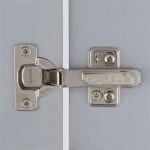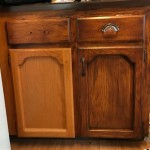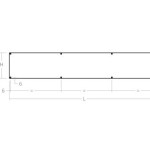What Is The Best Kitchen Sink to Have?
Selecting the ideal kitchen sink is a crucial decision for any homeowner or renovator. The kitchen sink is a focal point of activity, used multiple times daily for tasks ranging from food preparation and dishwashing to general cleaning. As such, the "best" kitchen sink is a highly subjective concept, dependent upon individual needs, kitchen layout, budget, and aesthetic preferences. This article will explore the key factors to consider when choosing a kitchen sink, examining various materials, styles, configurations, and installation methods to provide a comprehensive overview.
Understanding Sink Materials
The material of a kitchen sink significantly impacts its durability, appearance, maintenance requirements, and cost. Common sink materials include stainless steel, cast iron, composite granite, fireclay, copper, and even stone. Each material offers distinct advantages and disadvantages.
Stainless Steel: Stainless steel is perhaps the most popular choice due to its affordability, durability, and resistance to heat and staining. Its neutral appearance complements a wide range of kitchen styles. The gauge, or thickness, of the stainless steel is a crucial factor. Lower gauge numbers indicate thicker steel, resulting in a more durable and quieter sink. A gauge of 16 or 18 is generally considered optimal for residential use. Stainless steel sinks are also available in different finishes, such as brushed, polished, or satin, affecting their appearance and susceptibility to scratches.
Cast Iron: Cast iron sinks are known for their exceptional durability and ability to retain heat, making them ideal for soaking dishes. They are typically coated with a porcelain enamel finish, providing a smooth, non-porous surface that is resistant to scratches and stains. However, cast iron sinks are significantly heavier than stainless steel sinks, requiring robust cabinet support. The porcelain enamel can also chip or crack over time, requiring repair or replacement.
Composite Granite: Composite granite sinks are made from a mixture of granite stone dust and resin. This material is extremely durable, scratch-resistant, and heat-resistant. Composite granite sinks are available in a variety of colors and textures, allowing for greater design flexibility. They are also relatively quiet compared to stainless steel sinks. However, they can be more expensive than stainless steel and may require specialized cleaning products to prevent staining.
Fireclay: Fireclay sinks are made from a type of ceramic clay fired at extremely high temperatures. This process results in a dense, durable, and non-porous material that is resistant to scratches, stains, and heat. Fireclay sinks are often found in farmhouse-style kitchens due to their characteristic apron-front design. While aesthetically pleasing, fireclay sinks can be prone to chipping and cracking if subjected to impact. They are also relatively heavy and can be expensive.
Copper: Copper sinks offer a distinctive and elegant aesthetic. Copper is naturally antibacterial and develops a unique patina over time, adding character to the sink. However, copper sinks can be expensive and require specialized care to maintain their appearance. Certain foods and cleaning products can react with copper, causing discoloration. The gauge of the copper also affects its durability, with thicker gauges being more resistant to dents and scratches.
Stone: Sinks made from natural stone, such as granite or marble, offer a luxurious and unique look. Each sink is inherently one-of-a-kind due to variations in the stone's pattern and color. However, stone sinks can be porous and susceptible to staining if not properly sealed and maintained. They are also generally very heavy and expensive.
Exploring Sink Styles and Configurations
The style and configuration of a kitchen sink influence its functionality and integration with the overall kitchen design. Common sink styles include single-bowl, double-bowl, triple-bowl, and farmhouse sinks. The configuration refers to the arrangement of the bowls and their relative sizes.
Single-Bowl Sinks: Single-bowl sinks consist of a single, large basin. They are ideal for washing large pots and pans that might not fit in smaller bowls. Single-bowl sinks are also a good choice for smaller kitchens where space is limited. However, they lack the separation offered by multiple bowls, making it difficult to simultaneously wash and rinse dishes.
Double-Bowl Sinks: Double-bowl sinks feature two basins, typically of equal size. These sinks provide greater versatility, allowing for separate washing and rinsing areas. They are also useful for multitasking, such as washing dishes in one bowl and prepping food in the other. However, some double-bowl sinks may not be large enough to accommodate large pots and pans.
Triple-Bowl Sinks: Triple-bowl sinks feature three basins, typically with a larger bowl in the center and smaller bowls on either side. These sinks offer the most separation and versatility, allowing for washing, rinsing, and garbage disposal functions to be performed simultaneously. However, they require a significant amount of counter space and may be overkill for smaller kitchens or households with fewer occupants.
Farmhouse Sinks: Farmhouse sinks, also known as apron-front sinks, are characterized by their exposed front panel that extends beyond the countertop. These sinks offer a distinctive and traditional aesthetic, often found in farmhouse-style kitchens. They are typically large and deep, making them ideal for washing large items. However, farmhouse sinks require specialized cabinet modifications and are generally more expensive than other types of sinks.
Within these styles, variations exist regarding the size and depth of the bowls. Deeper bowls offer more space for washing large items, while shallower bowls may be more comfortable for individuals with back problems. The overall dimensions of the sink must also be considered in relation to the available counter space and the size of the base cabinet.
Considering Installation Methods and Mounting Options
The installation method of a kitchen sink affects its appearance, ease of cleaning, and potential for water damage. Common installation methods include undermount, top-mount (drop-in), and integrated sinks.
Undermount Sinks: Undermount sinks are installed beneath the countertop, creating a seamless transition between the sink and the countertop. This installation method offers a clean and modern aesthetic and makes it easier to wipe crumbs and spills directly into the sink. However, undermount sinks require a solid surface countertop material, such as granite, quartz, or solid surface. They are also typically more expensive to install than top-mount sinks.
Top-Mount (Drop-In) Sinks: Top-mount sinks are installed from above the countertop, with the rim of the sink resting on the countertop surface. This installation method is relatively easy and inexpensive, making it a popular choice for DIY projects. Top-mount sinks can be installed with a variety of countertop materials, including laminate. However, the rim of the sink can trap crumbs and spills, making it more difficult to clean. The visible rim also presents a less streamlined appearance compared to undermount sinks.
Integrated Sinks: Integrated sinks are made from the same material as the countertop, creating a completely seamless and custom look. These sinks are typically made from solid surface materials, such as Corian or Swanstone. Integrated sinks offer a hygienic and easy-to-clean surface, as there are no seams or joints to trap dirt and bacteria. However, they are typically more expensive than other types of sinks and can be difficult to repair if damaged.
The mounting option also refers to how the sink is attached to the countertop or cabinet. Some sinks are mounted using clips or brackets, while others are attached using adhesive. The chosen mounting method should be appropriate for the material of the sink and the countertop to ensure a secure and long-lasting installation.
In summary, determining the "best" kitchen sink requires careful consideration of various factors. The optimal material depends on budget, desired aesthetic, and priorities regarding durability and maintenance. The ideal style and configuration depend on the size of the kitchen, the frequency of use, and the types of tasks performed. The appropriate installation method depends on the countertop material, budget, and desired aesthetic. By carefully evaluating these factors, homeowners can choose a kitchen sink that meets their specific needs and enhances their overall kitchen experience.
The 5 Best Kitchen Sinks In 2024

14 Best Kitchen Sink Materials For Ultimate Durability Style Vevano
The 5 Best Kitchen Sinks In 2024

42 Best Kitchen Sinks 2024

How To Choose The Best Material For Your Kitchen Sink Tap Warehouse

How To Choose A Kitchen Sink Capitol Kitchens And Baths

Best Kitchen Sinks Goodhomes

Best Kitchen Sinks In 2024 For Every Budget And Style

42 Best Kitchen Sinks 2024

9 Best Kitchen Sink Materials Pros Cons Sinks Drop In Stainless Steel
Related Posts








